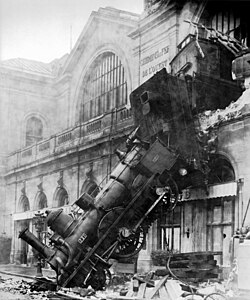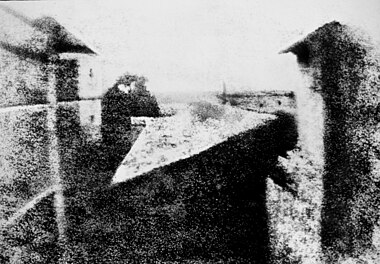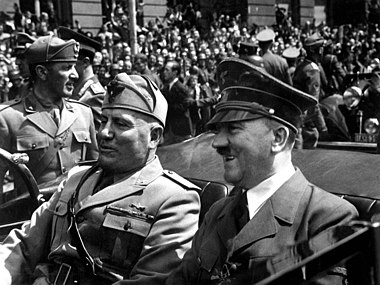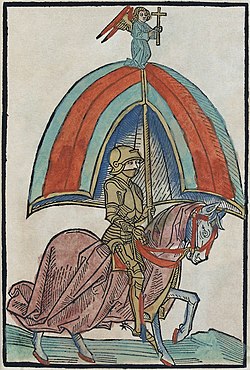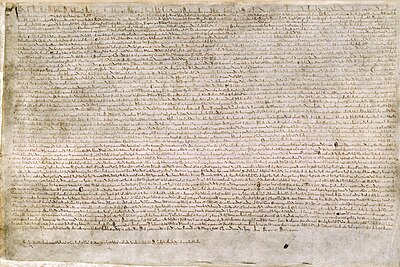Portal:History/Featured picture
The Selected picture box on the portal chooses one of the following at random when displaying the page. Follow the instructions below for adding or nominating a new picture to the list.
Picture candidates
Feel free to add related featured pictures to the list. Nominate other pictures on the portal talk page.
- Pictures must be
- Free to use and hosted on Commons
- Of good quality (not blurred, grainy or discoloured)
- Interesting
- Relevant to an article or topic
- Free to use and hosted on
To find appropriate pictures, use search box below:
Instructions
- For pictures, which appeared as picture of the day on the Main Page, just add the date in
YYYY-MM-DDformat to the list (please keep the list sorted). - For other pictures, use following parameters:
|iN= |titleN= |creditN= |captionN=
where N is the next unused number.
List of featured pictures
1895 train wreck, Gare Montparnasse
Photo credit: Studio Lévy and SonsOn October 22, 1895, the Granville–Paris Express train overran the buffer stop at Gare Montparnasse station. The engine careened across almost 30 metres (100 feet) of the station concourse, crashed through a 60 centimetre thick wall, shot across a terrace and sailed out of the station, plummeting onto the Place de Rennes 10 metres (30 feet) below where it stood on its nose. While all of the passengers on board the train survived, one woman on the street below was killed by falling masonry.
Photo credit: Nicéphore Niépce
The first successful permanent photograph, created in 1826, is titled "View from the Window at Le Gras". It required an eight-hour exposure in bright sunshine and was printed on a polished pewter plate covered with a petroleum derivative called bitumen of Judea. Due to the long exposure, the buildings are illuminated by the sun from both right and left.
Ancient Pueblo Peoples
. it is estimated that the population of Cliff Palace was roughly 100–150 people.German Spring Offensive of 1918, it was found that while some troops had discarded their rifles
, hardly any had left behind their respirators.U.S. Army "half-tracks" form a convoy on the beach. The Normandy landing was the largest seaborne invasion in history, with almost three million troops crossing the English Channel
.Photo credit: McPherson and Oliver
Scars of a whipped slave named Peter, photo taken at Baton Rouge, Louisiana, 1863. In his own words, "Overseer Artayou Carrier whipped me. I was two months in bed sore from the whipping. My master come after I was whipped; he discharged the overseer." The slave pictured here escaped from a plantation in Mississippi, made his way to Union forces, and joined the U.S. Army at the Union garrison located at Baton Rouge.
blacks
. By 1860, the slave population in the U.S. had grown to 4 million.USDA
Buried machinery in a barn lot, Dallas, South Dakota, United States, due to Dust Bowl conditions, May 1936. Dust storms from 1930–1939 caused major ecological and agricultural damage to American and Canadian prairie lands. This ecological disaster was a result of drought conditions coupled with decades of extensive farming using techniques that promoted erosion
.Cape to Cairo" concept for British domination
of Africa.German forces sweep into Czechoslovakia, October 1938. Originally published in the Völkischer Beobachter, it supposedly showed the intense emotions of joy which swept the populace as Hitler drove through the streets of Cheb
, 99% of whose inhabitants were ardently pro-Nazi Sudeten Germans at the time. In contrast, when the photo was published in the U.S., it was captioned, "The tragedy of this Sudeten woman, unable to conceal her misery as she dutifully salutes the triumphant Hitler, is the tragedy of the silent millions who have been 'won over' to Hitlerism by the 'everlasting use' of ruthless force." It is unknown what the true circumstances surrounding the photo are.US Army
Airborne Division.Russia Company in Moscow
from 1572 to 1585.James the Greater, identified by his scallop
shell emblem. The flag was made of coarse linen. All figures and heraldic insignia were created using oil-based paint.modern replica based out of Erie, Pennsylvania now travels the Great Lakes
as an educational and training vessel.First Polish Republic, but at the time of the map's creation, the city was part of the Ottoman Empire. It shortly returned to Poland and later became part of the Russian Empire with the Second Partition of Poland
in 1793.San Francisco, California, burning in the aftermath of the 1906 San Francisco earthquake. As damaging as the earthquake and its aftershocks
were, the fires that burned out of control afterward were much more destructive.Photo credit: Eva Braun
The two European Axis leaders during World War II, Benito Mussolini and Adolf Hitler, riding in an automobile, circa June 1940. This photo was found in Eva Braun's personal photo albums and is credited to her, though whether she was the true photographer is unknown.
Invasion of Waikato in 1863. Muka, the fibre of New Zealand flax
, was the basis of most clothing."The Trumpet Calls", a recruitment poster for the Australian Army in World War I. When the United Kingdom declared war on Germany, Australia followed without hesitation. This was considered to be expected by the Australian public, because of the very large number of British-born citizens and first generation Anglo-Australians at the time. A total of 331,814 Australians were sent overseas to serve as part of the Australian Imperial Force with a casualty rate (killed or wounded) of 64%.
test of technology for a nuclear weapon
.Girondins, whom he believed to be covert enemies of republicanism. The National Convention
ordered the trial, but his acquittal only served to increase his public profile and popular support.Photo credit: Anthony Fiala
A panorama from the Ziegler Polar Expedition of 1903–05, an unsuccessful attempt to reach the North Pole. The party remained stranded north of the Arctic Circle for two years before being rescued, yet all but one of its members survived.
first hot air balloon to carry humans, built by the Montgolfier brothers of Annonay, France. The flight occurred on 21 November 1783 from the grounds of the Château de la Muette in the western outskirts of Paris. Jean-François Pilâtre de Rozier, a physician, and François Laurent d'Arlandes
, an army officer, flew aloft about 3,000 feet (1,000 m) above the city for a distance of 9 kilometres (6 mi), with a total flying time of 25 minutes.raise sheep to provide wool
for the war effort. The poster reads, "Twenty sheep to clothe and equip each soldier / Boys and girls can help / Join a sheep club".Christ on the True Cross. The top, larger shields, are those of the seven Prince-electors, as well as one for the titular "Prefect of Rome
".Map credit: Konstantinos Plakidas
A map of Constantinople, the capital of the Byzantine Empire. Throughout the Middle Ages, Constantinople, strategically located between the Golden Horn and the Sea of Marmara at the point where Europe meets Asia, was Europe's largest and wealthiest city. It was officially renamed to its modern name Istanbul (Turkish: İstanbul) in 1930.
Declaration of Independence, a 12 by 18 feet (3.7 by 5.5 m) oil painting depicting the presentation of a draft of the United States Declaration of Independence to the Second Continental Congress. While this event did take place, it was not actually in the presence of all the people in the picture. The painting can be found in the rotunda of the United States Capitol
.Illustration: Anton Sorg; Restoration: Lise Broer
A knight, a member of the warrior class of the Middle Ages in Europe, in Gothic plate armour, from a German book illustration published 1483. The modern concept of the knight is as an elite warrior sworn to uphold the values of chivalry, faith, loyalty, courage and honour. Knighthood as known in Medieval Europe was characterized by the combination of two elements: feudalism and service as a mounted combatant. Both arose under the reign of the Holy Roman Emperor Charlemagne, from which the knighthood of the Middle Ages can be seen to have had its genesis.
Engraver: George J. Verbeck, after Thérèse van Duyl Schwarze
Restoration: Lise Broer
Restoration: Lise Broer
A 1901 etching of Queen Wilhelmina of the Netherlands, based on an 1898 painting of her in her coronation robe. Having assumed the throne at the age of ten after the death of her father, King William III, Wilhemina ruled for fifty-eight years (1890–1948), longer than any other Dutch monarch. In 1948 she abdicated in favor of her daughter Juliana, thereafter making few public appearances until the country was devastated by the North Sea flood of 1953.
{{{credit}}}
De Magere Compagnie (completed 1637), which depicts a company of schutterij, a voluntary city guard or citizen militia in the medieval and early modern Netherlands. Frans Hals was commissioned to create this, but he was unable to complete it after three years, and the company hired Pieter Codde to finish it. Group portraits such as this of schutterij were known as schuttersstuk, and were popular among the guards themselves.
self-coronation as Emperor of France on December 2, 1804. The act took place in Notre-Dame de Paris, during which Napoleon, eschewing tradition, took the crown
and placed it on his own head. The nearly 10 by 6 m (32.8 by 19.7 ft) work was commissioned before the coronation and completed in 1807..
Lithography: Day & Son; Restoration: Jake Wartenberg
An 1856 lithograph of the Selimiye Barracks, located in Istanbul, Turkey, being used as a hospital during the Crimean War. Florence Nightingale's experiences here during this time helped her develop the foundations of modern nursing. As such, the barracks now contain a museum dedicated to her and her staff.
Hindu Kshatriya (warrior) groups of India. Rajputs rose to prominence during the 9th to 11th centuries, and by the time of Indian independence, they ruled more than two-thirds of the estimated six hundred princely states, including three-quarters of the salute states
.Ottoman machine gun corps, before the Second Battle of Gaza, which took place on 19 April 1917. The First Battle of Gaza, just three weeks prior, had ended in defeat for the British Empire, and this second attempt to break through Turkish defenses was also unsuccessful. Six months later, on the third attempt, the Allied forces were finally able to break the Gaza–Beersheba
line.Illustration: Maurice Dessertenne
Restoration: Michel Vuijlsteke
Restoration: Michel Vuijlsteke
An illustration from Volume IV (E–G) of the encyclopedia Nouveau Larousse illustré showing various methods of lighting through the ages, starting from prehistoric times in the upper left (No. 1) to carbide lamps at the beginning of the 20th century (No. 54, lower right), with a separate section for Japanese lighting (No. 55–58, lower left).
Lord Buddha and a place for Buddhist pilgrimage. Evidence suggests Borobudur was abandoned following the 14th-century decline of Buddhist and Hindu kingdoms in Java, and the Javanese conversion to Islam. The monument is a UNESCO World Heritage Site and is the most popular tourist attraction
in the country.Khafra
.Artist: William Simpson; Restoration: Adam Cuerden
On October 25, 1854, during the Battle of Balaclava in the Crimean War, British cavalry units charged heavily fortified Russian opposition, an action known as the Charge of the Light Brigade. By mischance, they attacked the wrong target, as the orders were unclear, and as a result suffered great casualties. Alfred, Lord Tennyson's famous poem made the charge a symbol of warfare at both its most courageous and its most tragic.
Qing Dynasty China, had engaged in looting, arson, and killings of foreigners. In 1900, the Empress Dowager Cixi employed the Boxers to attack foreign settlements in Beijing. The uprising was eventually put down by 20,000 troops from the Eight-Nation Alliance
.watercolour painting depicting soldiers transporting winter clothing, lumber for huts, and other supplies through a snow-covered landscape, with partially buried dead horses along the roadside, to the British camps, during the Siege of Sevastopol of the Crimean War. In the winter, a storm ruined the camps and supply lines of the Allied forces (France, Britain and the Ottoman Empire
). Men and horses became sick and starved in the poor conditions.Urubamba Valley in Peru. It was probably built as an estate for the Inca emperor Pachacuti in the 15th century, but abandoned soon after during the Spanish conquest of the Inca Empire. Although known locally, it was unknown to the outside world before being brought to international attention in 1911 by the American historian Hiram Bingham, and it is now an important tourist attraction
.Artist: Unknown, after Johann Zahn
A drawing of the Vegetable Lamb of Tartary (Agnus scythicus), a zoophyte of Central Asia. Botanist Henry Lee described it as both a true animal and a living plant, although he did allow for the possibility that the lamb was the fruit of the plant. The lamb was believed to have blood, bones, and flesh like that of a normal lamb. It was connected to the earth by a stem similar to an umbilical cord that propped the lamb up above ground. The cord could flex downward allowing the lamb to feed on the grass and plants surrounding it. Once the plants within reach were eaten, the lamb died, at which point its cotton-like wool would be harvested and used to make textiles.
repatriation
.Bushmen. Most of the Khoikhoi have largely disappeared as a group, except for the largest group, the Namas
.The mushroom cloud from the Ivy Mike nuclear test, one of two tests conducted as part of Operation Ivy at the Pacific Proving Grounds on Elugelab in the Marshall Islands. Mike was the first successful full-scale test of a multi-megaton thermonuclear weapon, and it left an underwater crater 6,240 ft (1,900 m) wide and 164 ft (50 m) deep where the island had been.
Painting by Benjamin Haydon
Benjamin Haydon's painting of Thomas Clarkson addressing the 1840 Anti-Slavery Convention, held by the Anti-Slavery Society at Exeter Hall in London. The organisation was the second to bear that name and was dedicated to the abolishment of slavery worldwide. It continues to function today as Anti-Slavery International.
Photo: William Henry Jackson; restoration: Tom dl and Mmxx
An 1899 photochrom showing Temple Square, a 10-acre (4.0 ha) complex located in the center of Salt Lake City, Utah, US. The location is owned by and serves as headquarters of the Church of Jesus Christ of Latter-day Saints and was selected by Church president Brigham Young in 1846. Temple Square is home to several buildings; depicted here are the Salt Lake Temple, Salt Lake Tabernacle and Salt Lake Assembly Hall.
Seventh Coalition
.Great Globular Cluster in Hercules, some 25,000 light-years
away, and contains information related to mathematics, chemistry, and astronomy.Photo: Martin St-Amant
Machu Picchu, a 15th-century Peruvian Inca site located 2,430 metres (7,970 ft) above sea level, as viewed from Huayna Picchu. Established c. 1450, the settlement was abandoned at the time of the Spanish Conquest the following century. Although it remained known locally, it was not brought to international attention until after Hiram Bingham visited the site in 1911. Machu Picchu is now a popular tourist destination and UNESCO World Heritage Site, and restoration efforts are ongoing.
salat
.Photograph: Andrew Shiva
An aerial view of Masada, an ancient fortification in the Southern District of Israel. Found atop an isolated rock plateau, it overlooks the Dead Sea. The first fortifications on the mountain were built by Alexander Jannaeus, and significantly strengthened by the Roman client king Herod between 37 and 31 BCE. During the First Jewish–Roman War of 66–73 CE, the fortress was besieged, falling only after the 960 Sicarii defending it committed mass suicide.
Masada is among the more popular tourist attractions in Israel, and in 2001 it was made a UNESCO World Heritage Site.
Russian America from the Russian Empire (represented here by Russian Minister to the United States Eduard de Stoeckl). The lands involved became the modern state of Alaska
in 1959.Meiji period beginning in the late 1860s, the samurai lost much of their power, and the status was ultimately dissolved. However, samurai values
remain common in Japanese society.child labor for the National Child Labor Committee
. The project was a dangerous one, and Hine had to disguise himself – at times as a fire inspector, post card vendor, Bible salesman or industrial photographer – to avoid the factory police and foremen.Painting: Henry Walton
Edward Gibbon (1737–1794) was an English historian who published The History of the Decline and Fall of the Roman Empire in six volumes between 1776 and 1788. Born in Putney, Surrey, he became a voracious reader while being raised by his aunt, and was sent to study at Magdalen College, Oxford, and in Switzerland. Returning to England, in 1761 Gibbon published his first book, Essai sur l'Étude de la Littérature. This was well received, but Gibbon's next book was a failure. In the early 1770s Gibbon began writing his history of the Roman Empire, which was received with great praise.
Document: John, King of England, his barons and Stephen Langton
Cotton MS Augustus II.106, one of four surviving exemplifications of Magna Carta. This document, sealed by King John of England on 15 June 1215 (O.S.), was drafted by the Archbishop of Canterbury to make peace between the unpopular king and a group of rebel barons. The charter promised the protection of church rights, protection for the barons from illegal imprisonment, access to swift justice, and limitations on feudal payments to the Crown.
The document was reissued and renewed several times over the centuries, though its political impact decreased as later laws were passed. The charter was significant because the king had agreed to limit his power, so that although it dealt predominantly with the king and the barons, since the late 16th century it has been considered a symbol of liberty and the freedom of the individual.
Chromolithograph: Romanet & cie.
A 19th-century set of ten cards depicting events in the history of ballooning and parachuting. These cards depict, from left to right:
Top row:
- Joseph Louis Gay-Lussac and Jean-Baptiste Biot reaching an altitude of 4,000 metres (13,000 ft) (1804)
- André-Jacques Garnerin making a parachute descent in his gondola (1797)
- Louis-Sébastien Lenormand making the first witnessed parachute descent (1783)
- A series of fantastic flying machines dreamed up during the 18th century
- Use of balloons for reconnaissance during the Battle of Mainz (1795)
Bottom row:
- The Francesco Arbanis rescued by Italian fishermen (1846)
River Somme in France. More than one million men were wounded or killed, making it one of the bloodiest battles
in human history.
This map shows the situation on the first day on the Somme, as well as Allied gains up to 19 November 1916.Philoxenos of Eretria
. The whole mosaic measures 2.72 × 5.13 m (8 ft 11 in × 16 ft 9 in).Photograph credit: Neil Armstrong
Apollo 11 was the fifth crewed mission of NASA's Apollo program. After launching from the Kennedy Space Center in Florida on July 16, 1969, commander Neil Armstrong and Apollo Lunar Module pilot Buzz Aldrin landed Eagle in Mare Tranquillitatis on July 20, at 20:17:40 UTC, while command module pilot Michael Collins remained on Columbia in lunar orbit. Armstrong was the first to exit the spacecraft, stepping onto the surface 6 hours and 39 minutes later, on July 21, at 02:56:15 UTC; nineteen minutes later, Aldrin joined him on extravehicular activity, which lasted 2 hours, 31 minutes and 40 seconds. Armstrong and Aldrin lifted off from Tranquility Base after almost 22 hours on the lunar surface and rejoined Collins in the command module, before splashing down in the Pacific Ocean on July 24.
The mission was planned to the minute, with the majority of the photographic tasks performed by Armstrong with a single Hasselblad camera. Most of the photographs taken on the Moon that include an astronaut are of Aldrin; there are only five images of Armstrong partly shown or reflected, as in this photograph, with Armstrong and the lunar module reflected in Aldrin's helmet visor. "As the sequence of lunar operations evolved," Aldrin explained, "Neil had the camera most of the time [...] It wasn't until we were back on Earth and in the Lunar Receiving Laboratory looking over the pictures that we realized there were few pictures of Neil."
Banknote credit: Bank of Finland; photographed by Andrew Shiva
The Finnish markka was the currency of Finland from 1860 to 2002. The currency was divided into 100 pennies and was first introduced by the Bank of Finland to replace the Russian ruble at a rate of four markkaa to one ruble. The markka was replaced by the euro on 1 January 2002 and ceased to be legal tender on 28 February later that year.
This picture shows a 20-markka banknote issued in 1862, as part of the first issue of markka banknotes (1860 to 1862), for the Grand Duchy of Finland, then an autonomous part of the Russian Empire; 1862 was also the first year of issue for this particular denomination. The banknote's obverse depicts the coat of arms of Finland on a Russian double-headed eagle, and was personally signed by the director and the cashier of the Bank of Finland. The text on the obverse is in Swedish, whereas the reverse is primarily in Russian and Finnish.
Kerman Province in southeastern Iran, is the largest adobe building in the world and a UNESCO World Heritage Site. The ancient citadel has a history dating back around two thousand years, to the Parthian Empire (248 BC – 224 AD), but most of its buildings were constructed during the Safavid dynasty. A strong earthquake on 26 December 2003 largely devastated the fortress and the nearby modern city of Bam. The Arg-e Bam, including the governor's residence, the main tower, the Four Seasons Palace and the hammam
, were nearly totally destroyed; this photograph from 2016 shows the citadel partially reconstructed.Photograph credit: Ronald Torfs
Yellow badges are badges that Jews were ordered to wear in public during periods of the Middle Ages by the ruling Christians and Muslims, and in Nazi Germany in the 1940s. The badges served to mark the wearer as a religious or ethnic outsider, and often served as a badge of shame. The badge pictured is in the collection of the Kazerne Dossin Memorial, Museum and Documentation Centre in Mechelen, Belgium.
File:Stroop_Report_-_Warsaw_Ghetto_Uprising_06b.jpg
SS and SD troops during the suppression of the Warsaw Ghetto Uprising are forced to leave their shelter and march to the Umschlagplatz for deportation. The SD trooper pictured second from the right, is Josef Blösche, who was identified by Polish authorities using this photograph. Blösche was tried for war crimes in Erfurt, East Germany
in 1969, sentenced to death and executed in July of that year.File:Shiva as the Lord of Dance LACMA.jpg
A Chola dynasty sculpture depicting Shiva. In Hinduism, Shiva is the deity of destruction and one of the most important gods; in this sculpture he is dancing as Nataraja, the divine dancer who unravels the world in preparation for it being remade by Brahma.
The "Theatre" at
Wadi Araba, the great valley running from the Dead Sea to the Gulf of Aqaba
. It is famous for having many stone structures carved into the rock.Archive
- History/Featured picture/1
- History/Featured picture/10
- History/Featured picture/11
- History/Featured picture/12
- History/Featured picture/13
- History/Featured picture/14
- History/Featured picture/15
- History/Featured picture/16
- History/Featured picture/17
- History/Featured picture/18
- History/Featured picture/19
- History/Featured picture/2
- History/Featured picture/20
- History/Featured picture/2006
- History/Featured picture/2007
- History/Featured picture/21
- History/Featured picture/22
- History/Featured picture/23
- History/Featured picture/24
- History/Featured picture/25
- History/Featured picture/26
- History/Featured picture/27
- History/Featured picture/28
- History/Featured picture/3
- History/Featured picture/4
- History/Featured picture/5
- History/Featured picture/6
- History/Featured picture/7
- History/Featured picture/8
- History/Featured picture/9
- History/Featured picture/April, 2006
- History/Featured picture/April, 2007
- History/Featured picture/April, 2008
- History/Featured picture/April, 2009
- History/Featured picture/April, 2010
- History/Featured picture/April, 2011
- History/Featured picture/August, 2006
- History/Featured picture/August, 2007
- History/Featured picture/August, 2008
- History/Featured picture/August, 2009
- History/Featured picture/August, 2010
- History/Featured picture/August, 2011
- History/Featured picture/December, 2005
- History/Featured picture/December, 2006
- History/Featured picture/December, 2007
- History/Featured picture/December, 2009
- History/Featured picture/December, 2010
- History/Featured picture/February, 2006
- History/Featured picture/February, 2007
- History/Featured picture/February, 2008
- History/Featured picture/February, 2009
- History/Featured picture/February, 2010
- History/Featured picture/February, 2011
- History/Featured picture/January, 2006
- History/Featured picture/January, 2007
- History/Featured picture/January, 2008
- History/Featured picture/January, 2009
- History/Featured picture/January, 2010
- History/Featured picture/January, 2011
- History/Featured picture/July, 2006
- History/Featured picture/July, 2007
- History/Featured picture/July, 2008
- History/Featured picture/July, 2009
- History/Featured picture/July, 2010
- History/Featured picture/July, 2011
- History/Featured picture/June, 2006
- History/Featured picture/June, 2007
- History/Featured picture/June, 2008
- History/Featured picture/June, 2009
- History/Featured picture/June, 2010
- History/Featured picture/June, 2011
- History/Featured picture/Layout
- History/Featured picture/March, 2006
- History/Featured picture/March, 2007
- History/Featured picture/March, 2008
- History/Featured picture/March, 2009
- History/Featured picture/March, 2010
- History/Featured picture/March, 2011
- History/Featured picture/May, 2006
- History/Featured picture/May, 2007
- History/Featured picture/May, 2008
- History/Featured picture/May, 2010
- History/Featured picture/May, 2011
- History/Featured picture/November, 2006
- History/Featured picture/November, 2007
- History/Featured picture/November, 2008
- History/Featured picture/November, 2009
- History/Featured picture/November, 2010
- History/Featured picture/November, 2011
- History/Featured picture/October, 2006
- History/Featured picture/October, 2007
- History/Featured picture/October, 2008
- History/Featured picture/October, 2009
- History/Featured picture/October, 2010
- History/Featured picture/October, 2011
- History/Featured picture/September, 2006
- History/Featured picture/September, 2007
- History/Featured picture/September, 2008
- History/Featured picture/September, 2009
- History/Featured picture/September, 2010
- History/Featured picture/September, 2011
- History/Featured picture/Suggest

